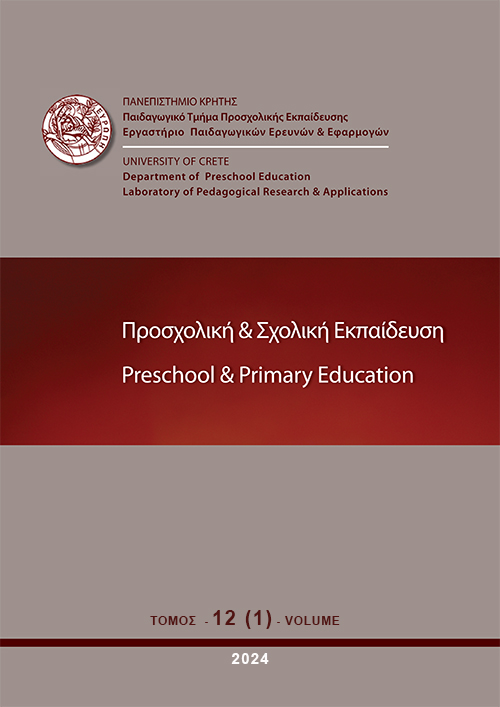The role of family’s socioeconomic status in kindergarten students' phonological and morphological awareness skills

Abstract
Parental socio-economic status (SES) has been shown to be associated with the development of phonological awareness in pre-school age. However, less is known about the relationship between the various dimensions of SES and the development of phonological and morphological awareness skills. The purpose of the present cross-sectional study was to examine separately the role of both mothers’ and fathers’ educational and occupational level in the development of phonological and morphological awareness skills. Two hundred and twenty-nine Greek kindergarten students were tested on measures of phonological awareness (initial phoneme recognition, syllable deletion, and phoneme deletion) and morphological awareness (manipulation of inflected forms, manipulation of derived forms, and word analogy) in the second quarter of the school year. Two scores were calculated for phonological and morphological awareness respectively (epilinguistic vs. metalinguistic level of awareness). Children were also tested on measures of verbal and non-verbal intelligence, short-term memory, and vocabulary. In addition, the children’s parents were asked to fill in a questionnaire about their education and occupation. Both mothers’ and fathers’ education was divided into three categories, while their occupations were grouped into four categories respectively. The results showed that the children’s performance in all measures of phonological and morphological awareness differed according to the educational and occupational level of each parent. The differences were mainly found between the extreme educational and occupational categories, but there were also some differences among other categories. Generally, children with mothers/fathers from the highest educational category performed better on all measures of phonological and morphological awareness than children with mothers/fathers from the lowest educational category respectively. Similarly, children with mothers/fathers from the highest occupational category performed better on the same measures than children with mothers/fathers from the lowest occupational category respectively. Furthermore, results from hierarchical regression analyses showed that both mothers’ educational and occupational level accounted for a small, but still significant, amount of variance in the measures of morphological and phonological awareness at the epilinguistic level after controlling for age, verbal intelligence, nonverbal intelligence, short-term memory, and vocabulary. On the other hand, both fathers’ educational and occupation level accounted for a small, but still significant, amount of variance in the measure of morphological awareness at the epilinguistic level when age, verbal intelligence, nonverbal intelligence, short-term memory, and vocabulary were controlled for. Taken together, these findings speak to the importance of parental socioeconomic factors, such as educational level and occupational status, in the development of children’s phonological and morphological awareness skills in kindergarten, particularly at the epilinguistic level of awareness. Furthermore, they provide supportive evidence for those suggesting that it is appropriate to examine separately the effects of maternal and paternal SES on the development of emergent literacy skills.
Article Details
- How to Cite
-
Grigorakis, I., & Eleftherakis, T. (2024). The role of family’s socioeconomic status in kindergarten students’ phonological and morphological awareness skills. Preschool and Primary Education, 12(1), 38–65. https://doi.org/10.12681/ppej.34470
- Section
- Articles

This work is licensed under a Creative Commons Attribution-NonCommercial-ShareAlike 4.0 International License.
Authors who publish with this journal agree to the following terms:
- Authors retain copyright and grant the journal right of first publication with the work simultaneously licensed under a Creative Commons Attribution Non-Commercial License that allows others to share the work with an acknowledgement of the work's authorship and initial publication in this journal.
- Authors are able to enter into separate, additional contractual arrangements for the non-exclusive distribution of the journal's published version of the work (e.g. post it to an institutional repository or publish it in a book), with an acknowledgement of its initial publication in this journal.
- Authors are permitted and encouraged to post their work online (preferably in institutional repositories or on their website) prior to and during the submission process, as it can lead to productive exchanges, as well as earlier and greater citation of published work (See The Effect of Open Access).


